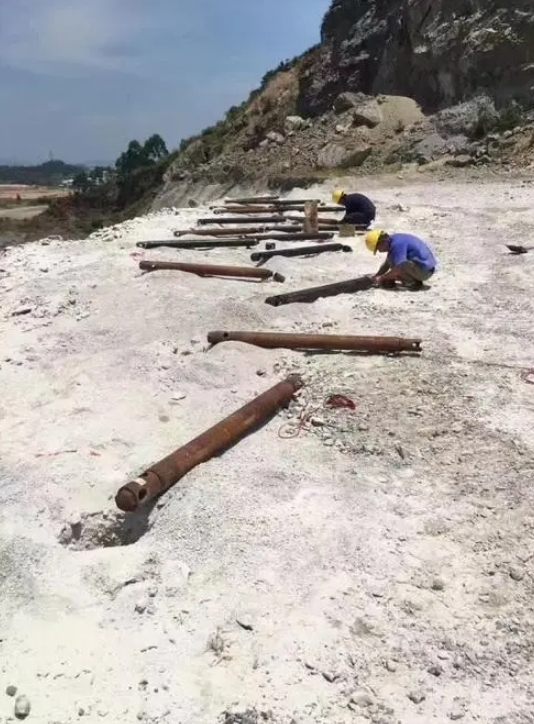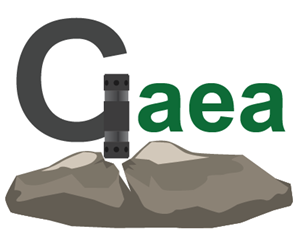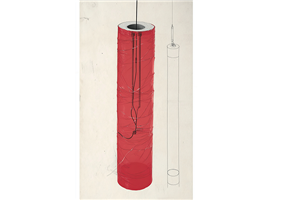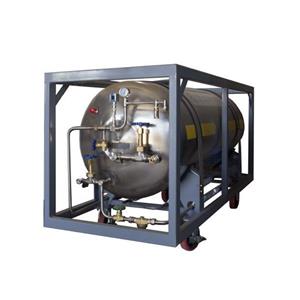CO2 rock Blasting system Technology introduce
New technology: O2 rock demolition system
Link:
Related Products:CO2 rock blasting system
With strict environmental protection inspections, it is increasingly difficult to apply for mining, especially the application process for explosives is very complicated. Moreover, in the process of open-air blasting with explosives, not only a large amount of dust will be generated, but also flying rocks, which will threaten the life safety of operators. So, is there any equipment that can replace explosives for mine blasting?
CO2 gas can be converted into liquid under a certain high pressure. The liquid CO2 is compressed into a cylindrical container (blasting tube) by a high-pressure pump, and the safety film, rupture disc, heat-conducting rod and sealing ring are loaded. The alloy cap is tightened to complete the preparations before blasting. Bring the blasting tube, detonator and power cord to the blasting site, insert the blasting tube into the drill hole and fix it, and connect the detonator power supply.
When the microcurrent passes through the high thermal conductivity rod, high temperature is generated to break through the safety film, instantly gasify the liquid CO2, and the rapid expansion generates a high-pressure shock wave, causing the pressure relief valve to open automatically, and the rapid expansion of the volume of liquid CO2 when absorbing heat and gasifying generates high pressure to cause the rock mass to crack.
Advantages
1. Gas is safer than explosives, and is not a civil explosive product. It does not require approval for transportation, storage and use.
2. There is no need for cumbersome procedures for explosives approval and strict supervision by the public security department.
3. There is no destructive vibration and short wave during the blasting process, the proportion of dust is reduced, and the impact on the surrounding environment is not great.
4. It can be used in complex working environments, such as coal mines and mining fields.
5. CO2 gas is easy to purchase, and some devices can be reused.
6. Multiple blasting tubes can be connected in parallel at the same time, with great blasting power and large rock individuals after blasting.
Disadvantages
1. Low efficiency: The steps are too complicated, and the explosion can only be carried out several times a day. The more links there are, the more likely there will be problems. Such as filling, wiring, sealing and other links.
2. Requirements for the air surface: It is effective only when the air surface is used. It is not suitable for deep foundation pits or working surfaces with poor volleying.
3. Low output: It is impossible to achieve multi-row blasting, so the number of blasting tubes for a single blasting should not exceed two rows. If it exceeds one row, it is easy to get stuck or blow up the blasting tube.
4. High cost: The activator used is a special, disposable item, and the blasting cost is high when the output is not high.
5. High requirements: The blasting tube filling process and on-site construction are relatively complicated, and the quality requirements for the blast-hole are relatively high.
6. Noise and safety: Although the blasting vibration force is not large, the sound is obvious after all. If it is to be used in residential buildings and buildings around, it should try to consult the local safety supervision and environmental protection for permission.

Expansion agent
The mechanism of blasting by expansion agent is different from that of explosives. It mainly relies on the expansion agent to undergo slow chemical reactions and physical changes in the crushed body to deform the grains, increase the temperature, and expand the volume, so as to gradually increase the static expansion pressure on the hole wall, causing the medium to crack and disintegrate.
Scope of application
1. Concrete projects and rock loosening projects that need to be demolished under conditions where explosive blasting and mechanical crushing are not allowed or suitable.
2. Urban buildings, large equipment concrete foundation demolition, water conservancy, roads and bridges, tunnels and other projects that require "static blasting method" crushing construction. The integrity and structural strength of the retained rock and concrete must not be damaged.
3. Crushing and loosening of ordinary rocks, excavation of large-sized shafts, anti-slip piles, bored piles, and trench caissons.
4. Mining of precious rock waste and stone cutting.
5. Suitable for under-excavation treatment and slope treatment projects that require excavation and support at the same time.
Features
1. Large expansion force: the maximum can reach 122 MPa (1220kg/c㎡).
2. Short reaction time: the shortest time for the maximum expansion force to appear can be within 2 hours. The reaction time can also be adjusted between 2 hours and 10 hours.
3. Easy to control the shape and convenient cutting: It is easy to control the shape of the crushed body after crushing. It can be broken if necessary and retained if necessary.
4. Simple construction and easy operation: No detonator, explosives, blasting or professional work is required. The operator training time is very short.
5. Environmental protection: No sound, vibration, flying stones, toxic gas or shock wave during use.





